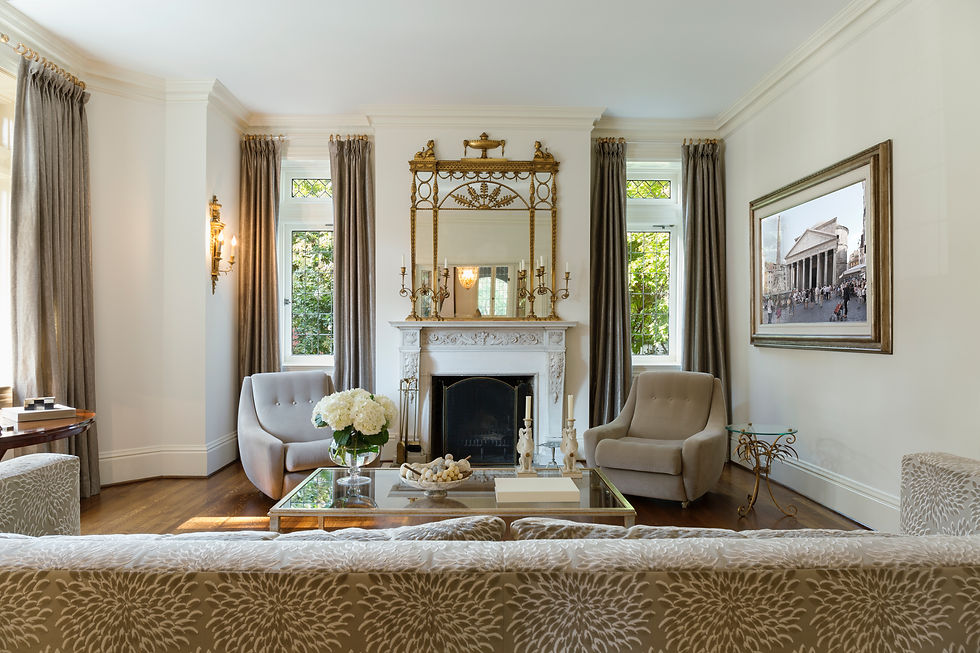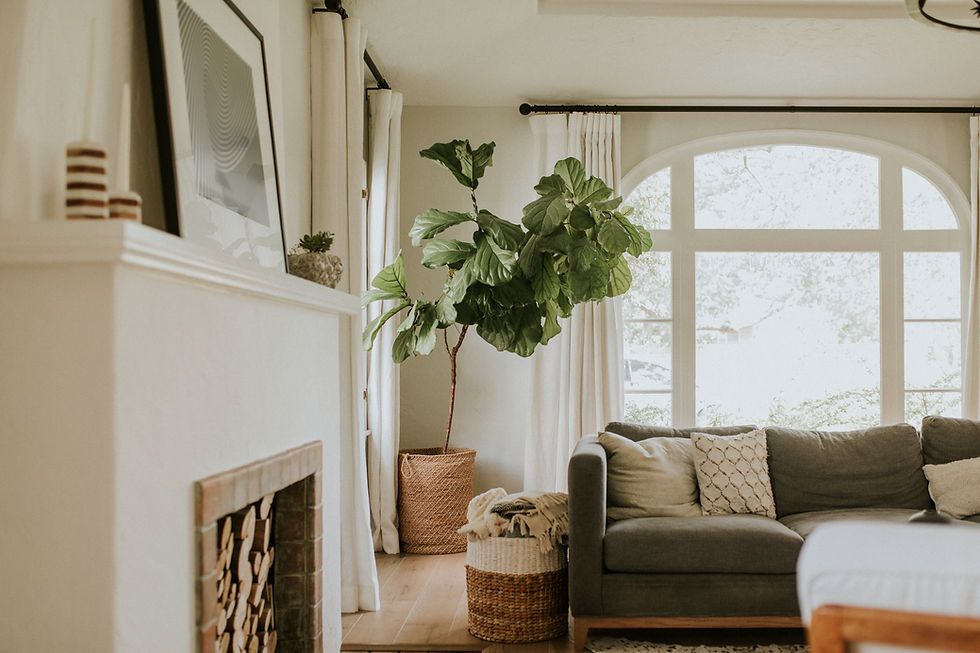Optical Tricks in Interior Design: How to Visually Transform Your Space
- Ирина Колб

- Jun 24
- 3 min read
Updated: Oct 3
Do you ever feel that your home seems cramped and dark, even if there’s technically enough room? The walls feel like they’re closing in, the ceiling seems to press down, and there’s never quite enough light?
The good news: you can fix this without renovation or big expenses. A few simple optical tricks in interior design can completely change the atmosphere of a room — making it feel more spacious, brighter, and more comfortable.
In this article, we’ve collected practical solutions you can easily apply yourself and see the results right away.

Use Light Colors on Walls and Ceilings
Light-colored walls are the simplest way to visually “open up” a room. Warm whites, light grays, beiges, or soft pastels reflect light and make a space feel larger.
One trick works especially well in small rooms: paint the ceiling the same color as the walls, or just a shade lighter. This erases the visual boundary, and the room feels taller.
But keep in mind the opposite effect. Pure cold white in dark rooms can look too harsh, and a strong contrast like “dark walls + bright white ceiling” will visually lower the ceiling.

Curtains as a Visual Trick
Curtains can change the perception of a room just as much as wall color. By placing the curtain rod higher than the window frame and slightly wider than its width, the window looks larger and the ceiling higher.
Long drapes hanging almost from the ceiling add lightness to the space and create the effect of extra height, even in standard 8-foot rooms.

Mirrors: A Simple Solution for More Space
A large mirror can instantly change the feel of a room: it reflects light, adds depth, and makes the space appear bigger.
You can hang one opposite a window to boost natural light, place it behind a sofa or console to “push back” a wall, or use a full-height mirror to create the illusion of a second room.

Furniture with a Light Silhouette
Bulky furniture quickly overwhelms a room and makes it feel smaller, especially in compact spaces. Pieces with slender legs and lighter silhouettes work much better — they reveal more of the floor and walls, which makes the whole room feel larger.
Low sofas and armless chairs, open shelving, floating consoles, and wall-mounted storage add visual lightness and avoid the boxed-in effect of furniture that stretches from wall to wall.

Minimize Visual Noise with a Cohesive Palette
When a room has too many colors and patterns, it feels busy and smaller than it is. It works much better when the main surfaces — walls, furniture, and large textiles — are in tones that complement each other.
Bright colors should be kept for smaller details: pillows, artwork, or decorative accents. This way the eye has a place to rest, and the room instantly feels calmer and more spacious.

Small Steps to a Bigger Space: What the Art of Optical Tricks in Interior Design Teaches Us
Optical tricks aren’t illusions — they’re a way to highlight the best features of your home. Light walls, large mirrors, airy furniture, and a well-thought-out palette work together to create a sense of openness and harmony where it once felt cramped and dim.
Try just one of these ideas in your own home, and you’ll see how the room shifts in mood and comfort — all without renovation or major costs.
Planning a renovation or a bigger refresh? If you’re looking for professional solutions like remodeling, tile installation, or painting, our team at Tools and Hands is here to help. Schedule your free estimate today and let us make your home not only look better, but feel better.


